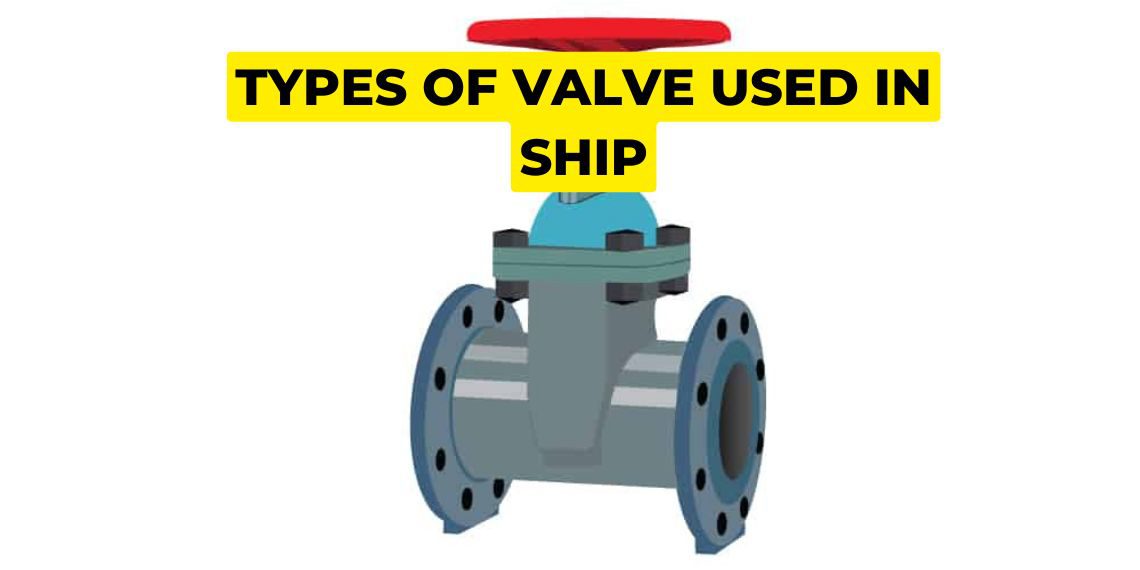Types of Valves used in ship
Valves are mechanical devices that control the flow of fluids (liquids or gases) through pipes or passageways.
Function of valves
The functions of a valve are to :
- To start or stop flow by opening or closing the valve.
- To control the rate of flow by opening or closing the valve partially.
- To change the direction of flow.
- To relieve under or over pressure of the system.
How are valves named?
Normally valves are named according to the type of disc used in the valve. A disc is the part of the valve which is used to open, close or regulate the flow of fluid through the valve.
For example:
- A ball valve is named so because its disc is shaped like a ball.
- The disc in a butterfly valve looks like a butterfly wing.
- In a gate valve the disc is shaped like a gate.
- A needle valve disc is shaped like a needle.
An exception to this is the globe valve which is named so because of the shape of its cover.
Categorization of valves
Valves are generally categorized into two types:
- Rotary Motion type
In this type of valve the disc is only rotating 90° between full close and full open position. Since these only have to rotate 90° they are also called fast acting valves
Example : Butterfly Valve, Ball Valve.
- Linear Motion type
In this type of valve the disc moves up and down to regulate the flow of fluid through the pipe
Example: Gate valve, Globe valve
Valve Actuators
Valve actuators can be explained in simple terms as the method of opening or closing the valve.
Valves can basically be controlled in four ways:
- Mechanically (By hand)
- Electrically (Using motors)
- Hydraulically (Using oil pressure)
- Pneumatically (Using air pressure)
Type of valves
1. Ball Valve
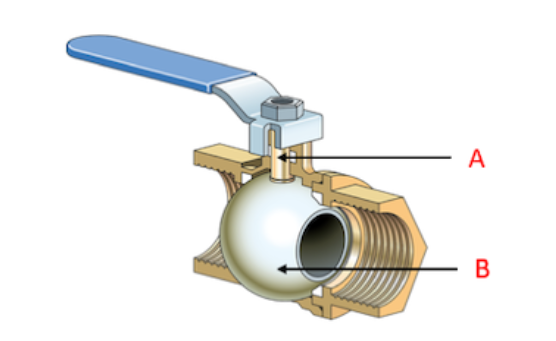
Advantage : →It is a fast acting valve since there is only 90° movement.
→There is only a low pressure drop across the valve when fully open.
Disadvantage : →It is only used in open and closed condition and cannot be used to regulate the flow.
2. Globe Valve
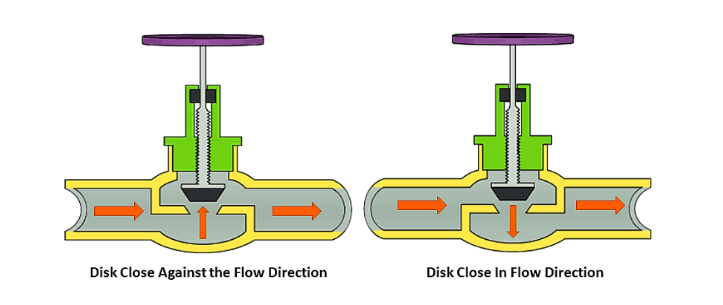
Advantage : →This valve can be used for regulating the flow as well.
→These valves also provide better sealing.
Disadvantage : →It is heavy
→There is a large pressure drop across the valve when fully open.
→Large power is required to open or close the valve.
3. Gate Valve
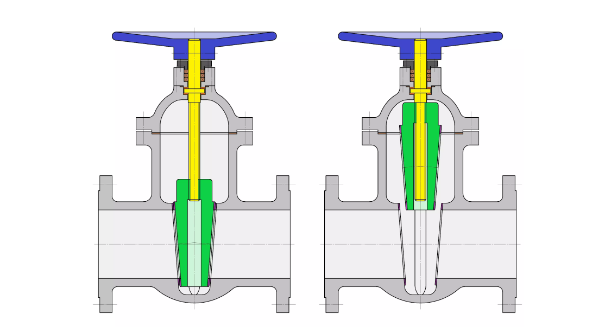
Advantage : →It is cheap.
→Uses a simple design.
→There is very little pressure drop when the valve is fully open.
Disadvantage : →It can only be used in fully open and closed positions.
4. Butterfly Valve
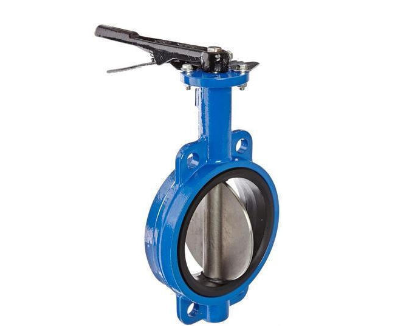
Advantage : →This valve can be used for fully opening, closing or for regulating the flow of fluid.
→It is fast acting.
→Lower in weight compared to other valves.
→Occupies less space.
→Cheap.
Disadvantage : →Cannot be used where the temperature of working fluids are high.
5. Relief Valve
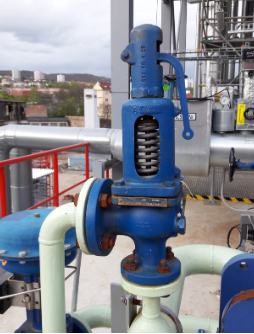
A relief valve is a safety device or pressure relief device used in various systems and equipment to protect them from overpressure or excessive pressure conditions. Its primary function is to release or “relieve” the excess pressure in a system, preventing damage or catastrophic failure. The most common example is the valve on the pressure cooker.
6. Check valve
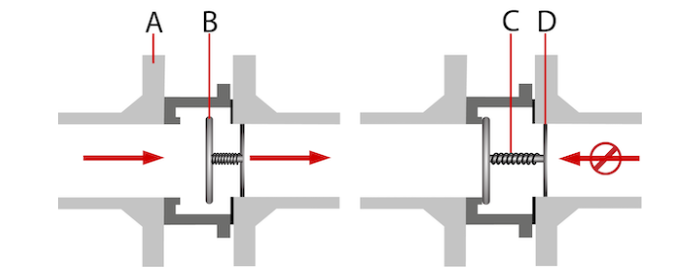
Check valve also called as non-return valve is a type of valve used in fluid systems to permit the flow of fluid in one direction while preventing backflow in the opposite direction. It operates automatically and does not require manual manipulation.
Swing check valves are commonly used in various applications, including water supply systems, wastewater systems, industrial pipelines, and HVAC systems.
7. Needle Valve
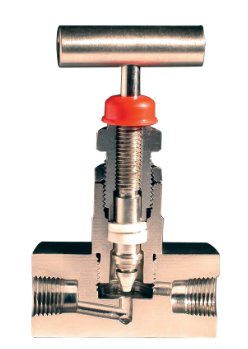
A needle valve is a type of valve used to precisely control the flow rate of a fluid within a system. It is designed for applications that require fine and accurate adjustment of flow, making it suitable for situations where even small changes in flow can have a significant impact.
This valve is used for very fine adjustments because the disc is in the shape of a needle. These types of valves are used in pressure gauges.
Colour coding in valves
In ships many different types of systems are being used such as seawater system, fresh water system, steam system etc. For identifying these various systems the wheels of different valves are assigned different colours.
Some examples of colour coding are :
- Sea Water : Green
- Fresh Water : Blue
- Lube Oil : Yellow
- Steam : Silver
- Air : Grey
- Fuel Oil : Brown
- Fire Line : Red
Factors on which ordering of valve depends
- Type of valve
- Material of valve
- Maximum working pressure of the line where valves will be fitted
- Maximum working temperature of the fluid
Onboard ships we order valves from a book called Marine Stores Guide published by IMPA(International Marine Purchasing Association)
Every spare part bought for the vessel is of a standardised length and must follow some laid out standard like : Japanese Institute Standard(DIS), Deutsche Institute for Normung(DIN) or American National Standard Institute(ANSI).
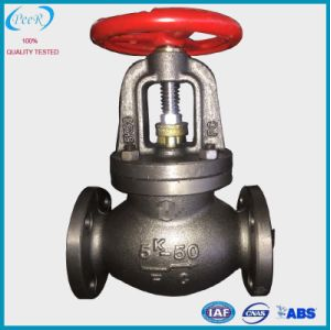
A 5k50 stamp on a valve as per JIS means that the valve can hold maximum 5 bar pressure and its nominal diameter is 50mm.
Similarly in DIN standards the valve which can hold max 20 bar pressure and has nominal diameter of 125 mm will have a stamp of 30DN125 on its body.
Note:
If you want to learn more about this topic, we suggest checking out our Combo package with the given link https://www.merchantnavydecoded.com/courses/c/ . It’s a great way to dive deeper into the subject through video explanations. This package covers all the important details and presents them in an easy-to-understand format. Watching the videos will help you grasp the topic better and make learning more enjoyable. So, we highly recommend giving our Combo package a try to enhance your knowledge on the subject.
Disclaimer :- The opinions expressed in this article belong solely to the author and may not necessarily reflect those of Merchant Navy Decoded. We cannot guarantee the accuracy of the information provided and disclaim any responsibility for it. Data and visuals used are sourced from publicly available information and may not be authenticated by any regulatory body. Reviews and comments appearing on our blogs represent the opinions of individuals and do not necessarily reflect the views of Merchant Navy Decoded. We are not responsible for any loss or damage resulting from reliance on these reviews or comments.
Reproduction, copying, sharing, or use of the article or images in any form is strictly prohibited without prior permission from both the author and Merchant Navy Decoded.

